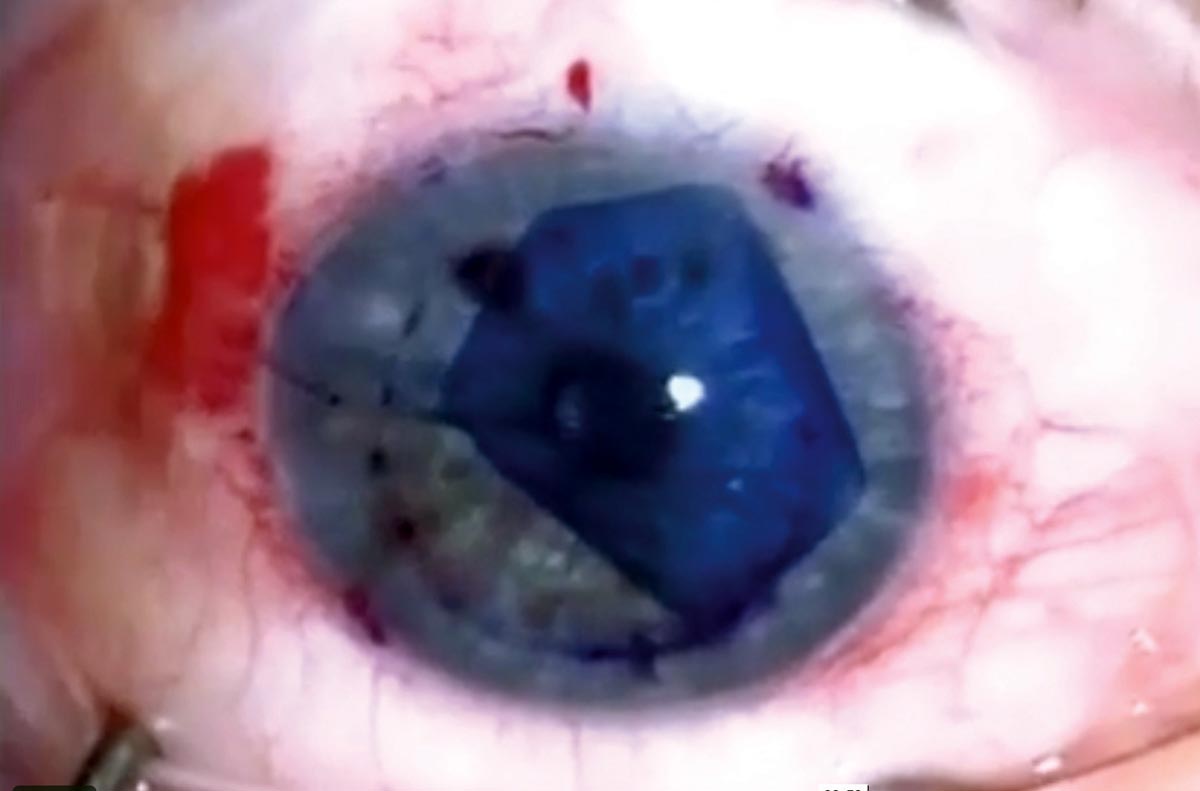 |
| Fuchs’ dystrophy patients with bilateral DMEK achieved sustainable outcomes until at least five years after the second surgery, and the same complications may rarely occur in both eyes. Photo: Jim Guzek, MD. Click image to enlarge. |
Although Descemet’s membrane endothelial keratoplasty (DMEK) is known as the gold standard treatment of eyes with Fuchs’ corneal dystrophy, there have been conflicting reports on an increased incidence of allograft rejection after bilateral keratoplasty. In a recent study, researchers aimed to assess the long-term clinical outcome, complications and graft survival of bilateral DMEK in patients with Fuchs’ and found that clinical outcomes after the procedure are similar in both eyes and sustainable in the longer term.
A total of 181 patients (362 eyes) with sequential bilateral DMEK for Fuchs’ were assessed up to five years postoperatively. Outcome measures were best-corrected visual acuity (BCVA), pachymetry, endothelial cell density, graft survival and complication rates.
From the first year until five years after DMEK was performed, BCVA, pachymetry, endothelial cell density and graft survival did not differ between the first and second eyes. Graft detachment occurred in 67 eyes (19%), graft rejection in nine eyes (3%), glaucoma in 25 eyes (7%) and graft failure in 22 eyes (6%). All differences were not significant. Five-year graft survival rates were comparable for first and second eyes (0.95 and 0.92, respectively).
Despite isolated differences in clinical outcomes in first and second eyes at the six-month follow-up for BCVA (worse in the second eye) and endothelial cell density decrease between the second and third postoperative year after DMEK (decrease significantly higher in the fellow eye, 6% vs. 9%), these differences disappeared toward the five-year postoperative mark.
“Concerning BCVA at six months, the higher frequency of major graft detachments in the second eyes (22 eyes vs. 11 eyes) and more time allowed for spontaneous graft attachment without surgical treatment before the six-month follow-up could explain the inferior BCVA and trend of the higher pachymetry values in the second eyes,” the authors explained in their paper for Cornea on the research. “Graft survival probability was over 90% for both eyes, which is comparable to five-year DMEK outcome studies.”
Intraoperative complications happened significantly more often in the second eye during a descemetorhexis, probably because with increasing surgical experience so-called “double layers,” namely, splitting of Descemet’s membrane, were recognized more easily than in the earlier surgeries of first eyes, the authors noted. “Complications, such as remnants and iris bleeding, occurred randomly, lacking a bilateral trend possibly because the surgeon may be alerted to avoid this complication in the second eye. Interestingly, intraoperative backward pressure was perceived during DMEK not only in phakic eyes and occurred in 2% bilaterally. Because this may complicate graft unfolding, one may consider measures for the second eye to lower the pressure intraoperatively by administering acetazolamide or other agents to facilitate the surgery.”
The authors were surprised to see an upside-down graft positioning in the anterior chamber was observed in almost 20% of eyes, although bilaterally in only 5%.
“It seems safe to perform DMEK in the second eye shortly after the first eye; however, it may be reasonable to only proceed early with the fellow surgery when there is a medical/subjective need, as in advanced corneal edema or younger patients who, for example, require a fast reintegration into their job,” the authors concluded.
Baydoun L, Vasiliauskatie I, Luceri S, et al. Long-term outcome after bilateral DMEK for Fuchs endothelial corneal dystrophy. Cornea. August 5, 2023. [Epub ahead of print.] |

